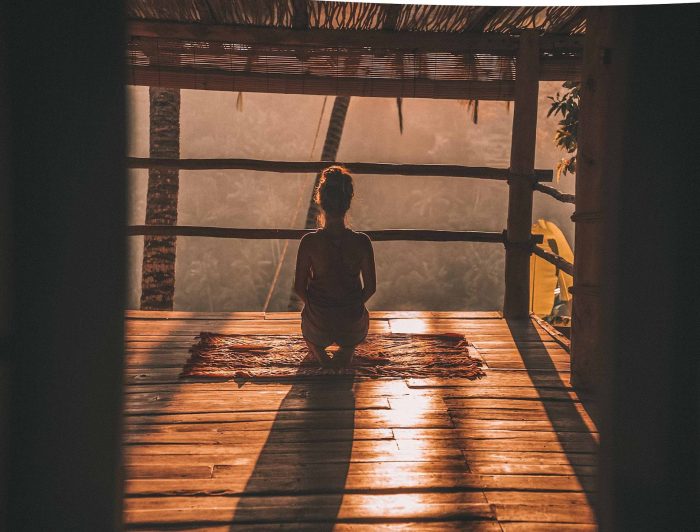As a yoga practitioner (who is also a teacher), I often have friends and students comment on my commitment to a daily practice.
“Every day? That’s amazing. How do you do it?”
I mostly just shrug and smile, saying something nondescript that doesn’t at all reflect how I feel about my daily practice. I
’m still a recovering people pleaser and never want to make someone feel bad about what their daily routine is or isn’t and tend to downplay mine, especially if it seems like I am hitting an unattainable goal.
But the truth is, over the past few years, I have significantly shifted my perspective about what yoga is to me. When I first started practicing about 10 years ago, I was in it for the physical benefit. Plank pose? Done. Stretching my hamstrings? I’m on it. Boat pose and core strengthening? Sign me up.
The westernization of yoga has reduced the practice to merely a physical one, but yoga philosophy will tell you that the physical benefits are secondary at best. Yoga and all it encompasses is a practice of the mind, not the body. A practice of connection and awareness, not abs and ass. With an influx of marketing and advertising geared toward sweating the toxins out in a yoga class (power-core-yoga-pilates-hybrid-sweat-box now available!), it’s no wonder we can’t wrap our heads around the quiet stillness being the most important part of the movement. No one is teaching this in the gym/yoga franchise world. It’s all headstands and high-fives for a sweaty job well done.
Yoga entered my life at a time when I desperately needed a lifeline. While I knew my body felt different when I took a day off, the more important lesson I was learning was that my mind felt different as well. The days I waited until my young children fell asleep to practice yoga felt longer and more strenuous. My patience didn’t come as easily and my tongue was sharper. It was noticeable.
I didn’t fully realize the positive impact yoga had on the physical and mental body until I went through my 200-hour yoga teacher training and continued my studying beyond. Yoga is not a workout. Asana (the poses and movement piece of yoga) is a small fraction of what yoga truly is.
It is self-study, meditation, breathwork, being truthful, holding yourself accountable, honoring the earth, mantra, social justice, being kind and conscious about not harming others, taking only what you need and nothing more, and so on. The list goes on and on and has little to do with physically moving the body or flexing any muscles. The deeper you delve into understanding this ancient practice, the more appreciation you develop for the impact yoga has on the world around you.
When my perspective began to shift from “I have to workout” to “I need to create space for myself,” a daily practice came with ease. I’m doing myself a favor. I’m creating a little gift. It’s like a little pocket of sunshine just for me that no one can take away or steal. It’s not a social construct or a guilt trip to myself based on a preconceived ideology that I should look a certain way or sweat a certain amount. Honestly, most days, I barely break a sweat in a 60-minute asana practice. Does that mean my body doesn’t build muscle or make shifts? Not at all. But to me, that is no longer the goal or the reason to practice. It is just something that happens along the way.
Instead, it is the advanced knowledge that I feel better in my own skin when I practice asana. I can sit for a longer period of time in meditation when my body has been quieted and stilled. My parasympathetic nervous system is activated when I connect my breath to movement and slow down, allowing me to largely remain in a rest and digest state of being.
Practicing yoga in its entirety allows me to interact in the world from a place of peace, understanding, and compassion responsively instead of reactively. And I don’t have to physically move at all to gain this awareness.
I invite you to recognize that you don’t either.
~
Please consider Boosting our authors’ articles in their first week to help them win Elephant’s Ecosystem so they can get paid and write more.
 Share on bsky
Share on bsky


Read 5 comments and reply